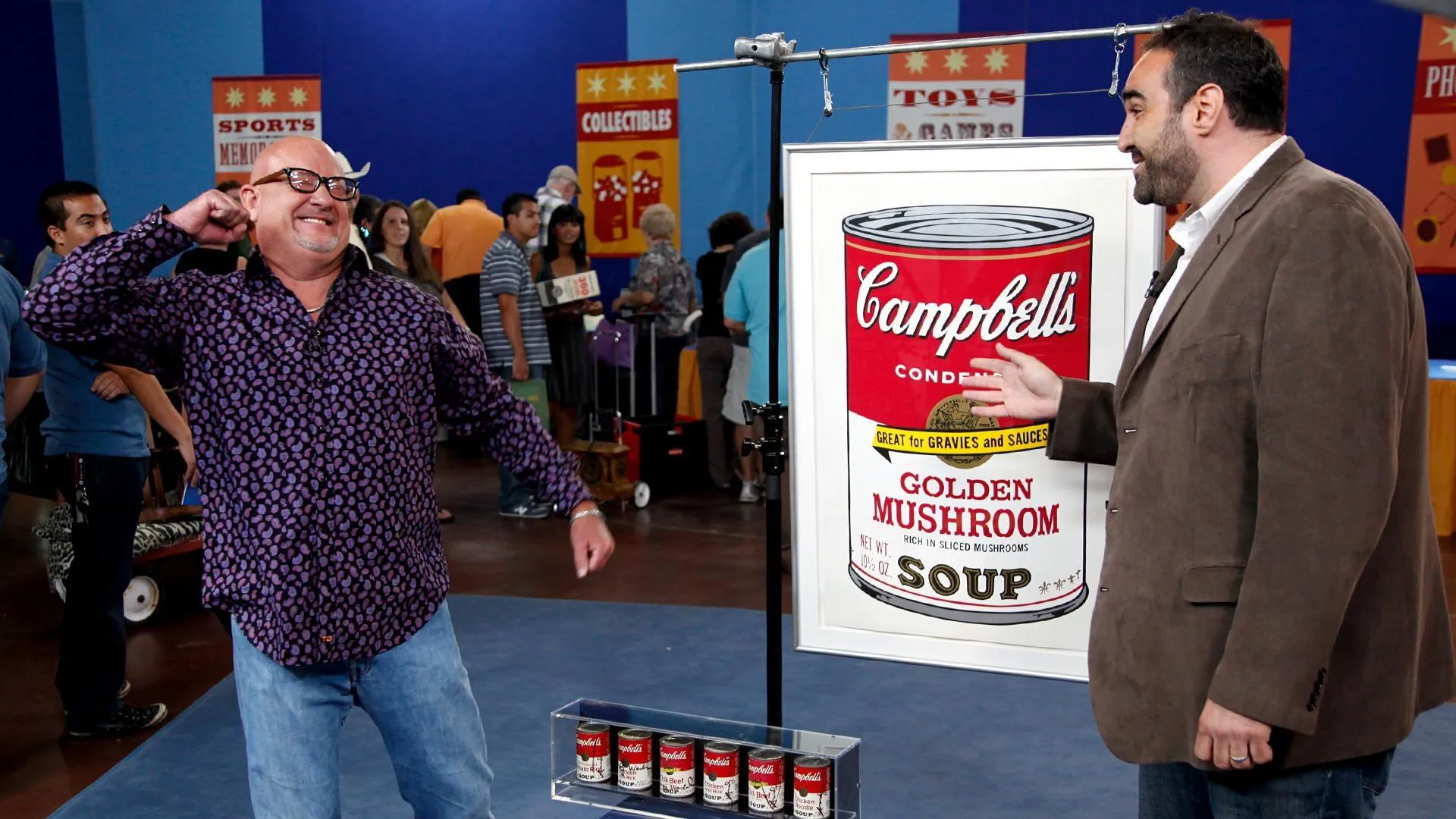GUEST: When I lived in New York City in my younger days, I was a birdwatcher-- I still am-- and at that time there was a gentleman. He was a good friend of a couple that I was good friends with. I only knew him a bit. But at a certain point in his life-- he was still fairly young-- he started to pass away, and I think he was trying to move things out of his personal belongings, and at that time it was offered to me, and I purchased it. It's an Audubon print, and it's two peregrine falcons eating two ducks, a gadwall and a green-winged teal.
APPRAISER: You know that there are different types of Audubon prints.
GUEST: Yes.
APPRAISER: And you did some research by looking at the Antiques Roadshow website, is that correct?
GUEST: Well, I ran into it by accident when I was looking up something for my wife, but they said if it's a double elephant folio, which is a larger edition, then it's an original and might be worth $10,000 to $15,000.
APPRAISER: The first thing about an original from the first edition is that the birds are life size. And you're a birder, so you know that these are actually life size, so that's good. The paper is about the right size. But there are reproductions that are done full size that look very good. There's one very easy way to tell. You look for a watermark. And a watermark is the name of the Whatman paper maker that you can see when you hold it up to the light. And actually, the Whatman watermark is up here, which, in the right light, if you kind of angle it and you know what you're looking for, you can see. So it is an original. And you can see that his name is right down here, John James Audubon, who is the artist of it. You have the title here, and over here, you have the name of the engraver. This is a hand-colored aquatint by Robert Havell. Sometimes these prints are called the Havell edition, which is the first edition. The Havell edition was done between 1827 and 1838. Now, you said that they could be $10,000 to $15,000. Well, actually, there were 435 different prints in Audubon's work, of which they maybe did between 175 and 200 of each one, so they're actually quite rare. Well, there's a very wide range of values on them, and they can go for as low as $2,000. A lot of it is the kind of bird and the scene. This bird, the peregrine falcon, is a very wonderful bird. It's dramatic. His picture of the face is just incredible. But what do you think about this print might keep the value down?
GUEST: Um, people don't necessarily want to see birds eating other birds?
APPRAISER: Right. Now, did you buy this from your friend?
GUEST: Yes, I did, I purchased this for about $2,000 back in the early to mid '80s.
APPRAISER: Now, I can't tell you the value totally because you've got a mat up here, and this obliterates some of the margin, and it's important whether the full margins are there. There should be some numbers up here, the part and the plate number. They may be there. If they're there, that adds to the value. If it's there, in an auction, this would probably go for about $12,000 to $14,000. If it's been trimmed, that would cut the value by 20%, maybe 30%. Now, if it didn't have the dead birds in it, it would sell for a lot more. They can go for as much as $150,000. If you took out those dead birds, you're probably looking at a $60,000 print.











